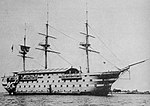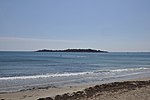Kragsyde
1885 establishments in Massachusetts1929 disestablishments in MassachusettsBuildings and structures demolished in 1929Demolished buildings and structures in MassachusettsFormer houses in the United States ... and 8 more
Gilded Age mansionsHouses completed in 1885Houses in Essex County, MassachusettsManchester-by-the-Sea, MassachusettsPeabody and Stearns buildingsQueen Anne architecture in MassachusettsShingle Style architecture in MassachusettsShingle Style houses

Kragsyde (1883–85 – 1929) was a Shingle style mansion designed by the Boston architectural firm of Peabody & Stearns and built at Manchester-by-the-Sea, Massachusetts. Although long demolished, it is considered an icon of American architecture.
Excerpt from the Wikipedia article Kragsyde (License: CC BY-SA 3.0, Authors, Images).Kragsyde
Smith's Point Road,
Geographical coordinates (GPS) Address Nearby Places Show on map
Geographical coordinates (GPS)
| Latitude | Longitude |
|---|---|
| N 42.562222 ° | E -70.771444 ° |
Address
Smith's Point Road 27
01944
Massachusetts, United States
Open on Google Maps






